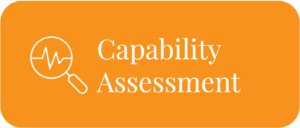Introduction: From Theory to Action – Mastering Procurement Decisions
Welcome to Part 2 of our series on procurement decision-making. If you haven’t already, we highly recommend reading Part 1: Two-Way and One-Way Decisions in Procurement to familiarise yourself with the foundational concepts of the two-way and one-way door framework.
A few considerations to kick-us off:
- In what ways might our current approval hierarchies be stifling innovation rather than mitigating risk?
- Are we truly empowering our team to make decisions, or merely delegating responsibility without authority?
- How can we balance the need for speed in decision-making with the imperative of strategic consideration?
These questions are essential as we transition from understanding the types of decisions to implementing a structured approach that leverages this knowledge for tangible improvements.
Revisiting the Two-Way and One-Way Door Concept
Building on the two-door framework, Part 2 focuses on actionable steps to integrate this model into your procurement strategy. We’ll explore how to categorise your decisions effectively, establish delegation of authority, and develop approval hierarchies that streamline your processes without compromising on strategic rigor.
What to Expect in This Part:
- Step-by-Step Guide: Detailed instructions on implementing structured decision-making.
- Practical Strategies: Tips on empowering your team and avoiding common pitfalls.
- Data-Driven Insights: Leveraging analytics to support your decisions.
By the end of this guide, you’ll be equipped with the tools and knowledge to make informed, efficient, and strategic procurement decisions that propel your organisation forward.
Step-by-Step Guide to Structured Decision-Making in Procurement
1. Evaluate Your Current Process
Begin by thoroughly assessing your current decision-making processes. This involves mapping out workflows, identifying key decision points, and pinpointing bottlenecks. Questions to consider include:
- Decision Complexity: Are all decisions treated with the same level of scrutiny, regardless of their complexity or risk?
- Bottlenecks: Where do delays typically occur? Are there approval stages or stakeholders that frequently cause slowdowns?
- Strategic Alignment: Do your current processes align with the organisation’s broader strategic objectives, or are they outdated or misaligned?
Use this evaluation to identify inefficiencies and areas where decision-making can be streamlined, ensuring that your processes support rather than hinder strategic goals.
2. Categorise Decisions
Once your current processes are evaluated, categorise decisions into two-way and one-way doors:
Minimal approvals, light on the paperwork (Two way)
These are low-risk and reversible decisions, such as routine purchases or selecting suppliers for non-critical items. These decisions should be fast-tracked, requiring minimal approvals and documentation.
The Game Changing Decisions (One way)
These involve high-impact, irreversible choices like long-term contracts, strategic partnerships, or large capital expenditures. These decisions should undergo thorough analysis and involve senior leadership or cross-functional committees.
Creating a decision matrix or checklist can standardise this categorisation, ensuring that decisions are handled appropriately based on their impact and reversibility.
3. Define Delegation of Authority and Develop Approval Hierarchies
To streamline decision-making ask yourself: How can I empower the business while keeping the big calls in the right hands?
- Establish Spending Limits: Assign specific spending limits to different management levels, empowering operational managers to handle low-value purchases while reserving high-value or strategic decisions for senior leaders.
- Tiered Approval Systems: Implement tiered approval systems, where lower-value purchases are quickly approved by operational managers, mid-range purchases by department heads, and high-value decisions by senior executives or procurement committees.
- Automate Workflows: Use procurement software to automate approval processes, ensuring that decisions are routed to the appropriate authority levels without unnecessary delays.
4. Empower the Business, Operations, and Your Team
Empowerment is essential for fostering agility and responsiveness across the entire organisation. By extending decision-making authority not just within the procurement function but also to key business and operational teams, you enable faster, more effective decision-making processes. How can you balance empowerment with accountability? What guardrails can you put in place to ensure that empowered decision-making doesn’t turn into a free-for-all?
Clear Delegation Across the Organisation
Clearly define and communicate the delegation of authority at all levels of the organisation. This involves outlining who within the business and operations teams can make decisions related to procurement, such as selecting suppliers or approving expenditures, within their designated limits.
Empower operational managers, department heads, and other business leaders to make decisions on low-risk, routine matters without waiting for higher-level approvals. This reduces bottlenecks and allows the procurement process to align more closely with operational needs.
Training and Development for All Stakeholders
Invest in training not just for the procurement team, but also for operational and business leaders. Equip them with the knowledge and tools they need to make informed decisions. This includes understanding risk assessment, supplier management, compliance requirements, and the strategic goals of the organisation.
Foster a culture of continuous learning where procurement and operational teams regularly share insights and best practices. This collaboration ensures that all teams are aligned and can make decisions that support the organisation’s broader objectives.
Accountability and Ownership Across Teams
Encourage all teams to take ownership of their decisions. This means establishing clear expectations for decision-making and empowering teams to act within their authority while being accountable for the outcomes.
Promote a culture where teams across the business and operations are encouraged to learn from their decisions—both successes and failures. This approach helps teams to continuously improve and adapt their decision-making processes, contributing to greater organisational agility.
5. When the Stakes are High: Navigating One-Way Door Decisions
Some decisions are too big to handle alone. When you’re staring down a one-way door decision, you need all hands-on deck. But how do you make sure you’re not just spinning your wheels in endless meetings?
Here’s how to tackle those high-stakes choices:
- Bring in the dream team: Get key players from finance, legal, and operations involved. Their diverse perspectives can help you spot risks you might’ve missed.
- Arm yourself with data: Use decision-making frameworks like cost-benefit analysis, total cost of ownership (TCO), and risk assessments. Trust me, these tools are your best friends when the pressure’s on.
- Know when to call in the big guns: Set up clear procedures for escalating decisions that are outside the norm, super risky, or involve key suppliers.
6. Document, Communicate and Review Policies
Here’s how to make sure your procurement policies aren’t just gathering dust on a shelf: Start by clearly documenting the criteria for decision-making, including ethical considerations, compliance requirements, and risk management strategies.
Then, communicate these policies effectively across your organisation, ensuring everyone understands their role in the decision-making process.
Regularly train your procurement professionals on these guidelines to reinforce this understanding and ensure alignment. Don’t stop there – periodically review and adjust your delegation authorities, approval processes, and decision-making frameworks to reflect changes in strategy, risk profile, or market conditions. T
his continuous cycle of documentation, communication, training, and review will keep your policies relevant, well-understood, and effective in guiding your team’s decisions.
7. Leverage Data for Strategic Decision-Making
Data is the foundation of informed and effective decision-making in procurement.

A lack of information used to be the issue for procurement departments. Now that we’re drowning in it, the problem has shifted; how do we organise all this data into some kind of coherent story?
Read: https://www.comprara.com.au/spend-analysis-for-data-driven-decisions/
Here’s how you can make data central to your procurement decisions:
- Rapid Opportunity Identification: Utilise data analytics to quickly pinpoint areas for cost savings or efficiency improvements. This allows you to focus your efforts where they’ll have the most impact.
- Accurate Needs Assessment: Analyse consumption patterns and forecast demand to understand your organisation’s true requirements. This ensures your procurement decisions align closely with actual needs.
- Real-Time Spend Tracking: Monitor spending patterns across categories and suppliers as they happen. This visibility allows you to swiftly address inefficiencies and negotiate more favorable terms.
- Proactive Market Intelligence: Use market data to anticipate trends, price fluctuations, and potential risks. This foresight enables you to make timely, informed decisions.
- Evidence-Based Decision Support: When faced with complex choices, let data be your guide. It provides a solid foundation for quick, confident decision-making.
Remember, the goal is to use data not just for analysis, but to drive faster, more informed decisions. Consider how you can integrate these data-driven insights into your daily procurement processes. How might this approach help you navigate both two-way and one-way door decisions more effectively?
Conclusion: Making Better Procurement Decisions with the Right Framework
Think back to those tough questions we started with. How many of your current challenges stem from treating every decision with the same level of scrutiny? By distinguishing between two-way and one-way door decisions, you’re not just optimising efficiency – you’re empowering your team, fostering innovation, and striking that crucial balance between speed and strategic consideration.
The speed of decision-making truly can be just as crucial as the decisions themselves. With this framework, you’re equipped to make fast, reversible decisions when appropriate, while giving those big, irreversible choices the time and attention they deserve.
If you find yourself still grappling with decision-making frameworks, governance, operational training, or leveraging data for better decisions, don’t hesitate to reach out to Comprara. We’re here to help you tailor your approach, enhancing your agility while minimising risk.
Remember, in procurement, it’s not just about making decisions – it’s about making the right decisions, at the right speed, with the right level of consideration.








